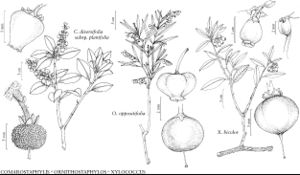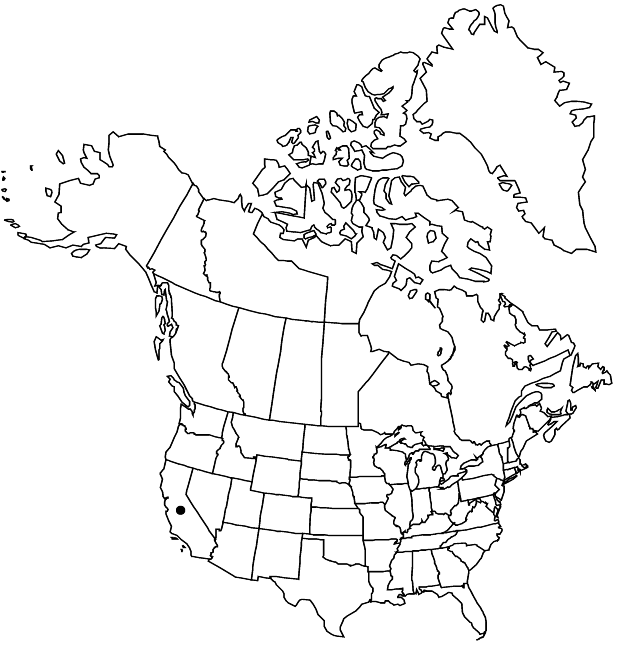familyEricaceae
subfamilyEricaceae subfam. Arbutoideae
genusComarostaphylis
speciesComarostaphylis diversifolia
Comarostaphylis diversifolia subsp. planifolia
Aliso 9: 191. 1978,.
IllustratedEndemic
Basionym: Comarostaphylis diversifolia var. planifolia Jepson Fl. Calif. 3: 29. 1939
Treatment appears in FNA Volume 8. Treatment on page 403.
Leaf blades broadly elliptic to obovate or broadly ovate, 3–9 × 1–3.5 cm, margins usually plane. Inflorescences 6–14 cm, gray-tomentose, without glandular hairs; floral bracts lanceolate-ovate to oblong-ovate, navicular, 3–10 mm. Pedicels 5–20 mm. Sepals eglandular.
Phenology: Flowering (Jan-)Mar–Jul; fruiting (Apr-)May–Sep(-Oct).
Habitat: Chaparral, oak woodlands, closed-cone pine forests with Arbutus menziesii, Arctostaphylos insularis, Ceanothus sp., Cercocarpus sp., Heteromelesarbutifolia, Pinusmuricata, P. remorata, Prunus sp., Quercusagrifolia, Q. dumosa, and Rhusintegrifolia
Elevation: 0-600 m
Discussion
Subspecies planifolia is the northernmost taxon in the genus, endemic to Los Angeles and Santa Barbara counties. It is found on the Channel Islands of Santa Catalina, Santa Cruz, and Santa Rosa, and on the mainland in the coastal Santa Monica and Santa Ynez mountains.
Selected References
None.
Lower Taxa
None.
... more about "Comarostaphylis diversifolia subsp. planifolia"
Calif. +
Chaparral, oak woodlands, closed-cone pine forests with Arbutus menziesii, Arctostaphylos insularis, Ceanothus sp., Cercocarpus sp., Heteromelesarbutifolia, Pinusmuricata, P. remorata, Prunus sp., Quercusagrifolia, Q. dumosa, and Rhusintegrifolia +
Present +
Aliso +
1889 +
Comarostaphylis diversifolia subsp. planifolia +
Comarostaphylis diversifolia +
subspecies +

